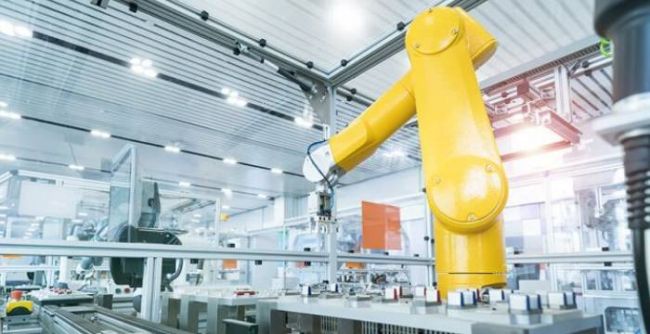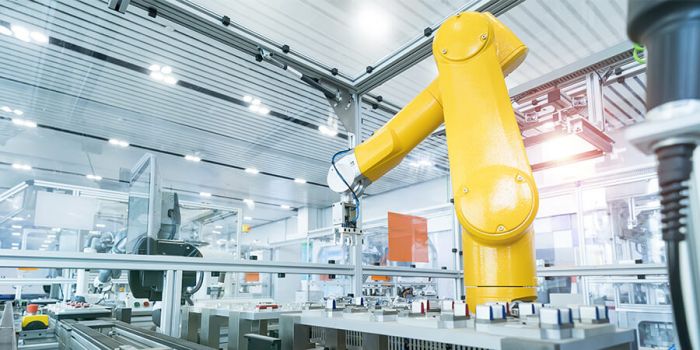Technology
6 min read
How Automation Powers Efficiency in Industry 4.0


In a modern factory where robotic arms assemble products with flawless precision and AI systems predict equipment failures before they happen, Industry 4.0 signals a new era of manufacturing driven by digital intelligence and automated precision. Automation and robots are boosting output cutting operating expenses, and helping keep things consistent across production runs.
Thanks to connected systems and smart tech, factories can smooth out work processes, make the most of their resources, and react better than ever to what the market wants. Well-planned automation approaches boost productivity lower costs, and keep quality steady at every step of production in clever manufacturing setups.
Automation and robotics are central to Industry 4.0, enabling manufacturing processes to become more efficient. Automation reduces human intervention, while robotics ensures precision, consistency, and safety in repetitive or hazardous tasks. Interconnected smart factories powered by real-time data analytics enable predictive maintenance, reduce errors, and optimize resource allocation. These systems improve product quality, reduce waste, and create flexible operations capable of scaling efficiently in a more competitive market than ever before.

Automation has an influence on smart factories allowing them to work like big machine systems that fix and control themselves as they go. By cutting down on mistakes, speeding up how fast things are made, and keeping quality the same automated work steps create a steadier place to operate. Data that comes in right away shows how to use resources better, make schedules precise, and where you should focus on getting things done.
Robots play a key role in jobs that need precision or involve dangerous conditions. They shine at putting together complex parts, operating heavy equipment, and overseeing processes that demand spot-on accuracy. Having robots around cuts down workplace dangers and keeps operations steady and productive. In settings where humans hit their limits, robots keep working keeping output high even when things get tough.
On production lines, machines equipped with advanced sensors and monitoring tools manage repetitive tasks, adjust speeds, and detect inconsistencies in real-time. Automation also optimizes manufacturing processes like repetitive, discrete, and batch production, offering increased precision and flexibility in managing diverse operational needs.
Supply chains benefit from automated inventory systems, which provide continuous oversight, predict shortages, and coordinate logistics efficiently. Improved visibility across supply networks helps prevent costly disruptions and reduces lead times. In addition, AI-powered quality control systems monitor production as it happens, catching defects early and preventing flawed products from reaching customers.
Automated production lines link up with data analysis tools pretty much making it easy to watch over everything in real time and tweak things super. They catch and fix slow spots fast, and they show patterns in those pesky repeated hold-ups, which helps make things better in the long run.
Folks running the machines can jump on little hiccups so they don't blow up into big expensive problems. Plus, machines that keep an eye on things make sure every product is top-notch and everything gets done when it should. As time goes by, all these linked-up systems form a workflow that's always changing to keep up with whatever new stuff comes along.
Artificial intelligence improves quality assurance by processing vast datasets generated throughout production. With real-time monitoring, defects are identified and addressed instantly, preventing defective products from advancing further in the process.
Predictive analytics plays an especially key role in anticipating equipment issues so as to alert maintenance teams to intervene before failures occur. Rather than reacting to equipment breakdowns and worn-out tools after the fact, being proactive about maintenance minimizes unplanned downtime and reduces costly interruptions. Over time, AI-driven systems adapt to your production trends, fine-tuning their accuracy and providing increasingly valuable insights for maintaining consistent quality.
Manufacturers enjoy obvious perks from automating things, but they sure run into big obstacles—think hefty upfront costs, workers pushing back, and the tricky job of fitting new tech into the old ways of doing stuff. Kicking things off with baby steps, like trying out a little test project, helps to figure out how things are humming along, tackle the initial roadblocks, and get folks on board before you go big with automating all the things. And yeah, teaching your team new skills is super important; sometimes it means dropping serious cash on training them up.
Programs to bump up the skills set workers up to handle the fancy robot gear fostering an environment where teamwork and being able to change things up is just how it's done. Teaming up with the tech gurus that provide the stuff makes the shift a whole lot smoother too; they've got your back with all that support and know-how when you're getting all that new gear in place.
Taking incremental steps toward automation helps minimize financial risks and prevent operational disruptions. Smaller pilot projects provide valuable insights, allowing businesses to identify potential challenges early and refine their strategies before broader implementation. This measured pace also gives teams time to adjust, develop confidence in new systems, and address technical hurdles effectively.
Moving step by step to automation reduces money risks and keeps work running. Starting with little test projects gives businesses good ideas and lets them spot problems soon. They can then tweak their plans before rolling out big-time. This slow and steady rhythm lets groups get used to things, trust the new tech, and sort out techy bumps in a smart way. As firms spread automation around their tasks, they get to polish how things are done and make sure the tech fits their big plans for the future.
To gauge how automation is doing its thing, you gotta start by picking out the main signposts (that's KPIs) that show how well your operations are running. You should look at stuff like how slick your production is how often your gear keeps ticking without trouble, and whether you're making many duds. These yardsticks are great for showing off what you're good at putting your problems on blast, and nudging you to make your workflow better.
Keeping an eye on these signposts makes sure your game plan stays tight with the big company aims. When teams go over their KPI patterns, they can spot the same old trip-ups and fix their game faster. These nuggets of wisdom get even sharper as your setup gets fancier letting you tweak where your resources go, keep your gear running smooth, and make sure what you're making stays top-notch. Running checks all the time means your automation game stays fresh, ready to roll with the punches, and ace at keeping up with what's needed.
Automation boosts how well factories run lowering expenses and making products better. This change affects everything from assembly lines to how things get to where they need to be and checking if they're okay. As factories start using new tech, being able to change and keep getting better is super important. When they're smart about using robots and machines, companies can keep up with changes and stay in the game.
Be the first to post comment!